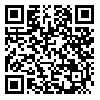Volume 4, Issue 3 (2014)
ORMR 2014, 4(3): 1-22 |
Back to browse issues page
Download citation:
BibTeX | RIS | EndNote | Medlars | ProCite | Reference Manager | RefWorks
Send citation to:



BibTeX | RIS | EndNote | Medlars | ProCite | Reference Manager | RefWorks
Send citation to:
Teimourpour B, Amiri Aghtaee R. Using interpretive structural modeling (ISM) to develop a customer knowledge management model in banking industry. ORMR 2014; 4 (3) :1-22
URL: http://ormr.modares.ac.ir/article-28-5446-en.html
URL: http://ormr.modares.ac.ir/article-28-5446-en.html
1- . Assistant Prof., Department of Industrial Engineering, Faculty of Engineering, Tarbiat Modares University Tehran, Iran
2- . M.A. Student of Industrial Engineering, Department of Industrial Engineering, Faculty of Engineering, Tarbiat Modares University, Tehran, Iran
2- . M.A. Student of Industrial Engineering, Department of Industrial Engineering, Faculty of Engineering, Tarbiat Modares University, Tehran, Iran
Abstract: (12150 Views)
Nowadays, customer is known as the organizations’ most important source of information. The competitive advantage was lately obtained by innovation of product and creating a brand, but in twenty first century, companies are facing more interactions creating a competitive advantage which is obtained by gathering customer knowledge. This study intends to determine a structural model by the application of interpretive structural modeling (ISM). According to the interpretive structural modeling findings, twenty five important and effective factors on the process of implementing the customer knowledge management in the bank have been identified. The structural model analysis showed that following variables of the superior management commitment, the middle managers, organizational culture, financial resources and information technology are the main factors, and act like the foundation of the model. Any type of change on other factors which have high levels of guidance and dependency, could affect the system and system outcome could also change these variants again. The final result of factor in model expresses that executing and implementing the customer knowledge management process is effective at achieving factors such as customers' satisfaction, increase of service quality and keeping customers as a valuable asset and finally obtaining a competitive advantage.
Keywords: Customer Knowledge Management, Competitive advantage, Interpretive Structural Modeling, bank, Customer relationship management
Article Type: Research Paper |
Subject:
-
Received: 2014/03/9 | Accepted: 2014/10/6 | Published: 2015/03/5
Received: 2014/03/9 | Accepted: 2014/10/6 | Published: 2015/03/5
| Rights and permissions | |
 |
This work is licensed under a Creative Commons Attribution-NonCommercial 4.0 International License. |







